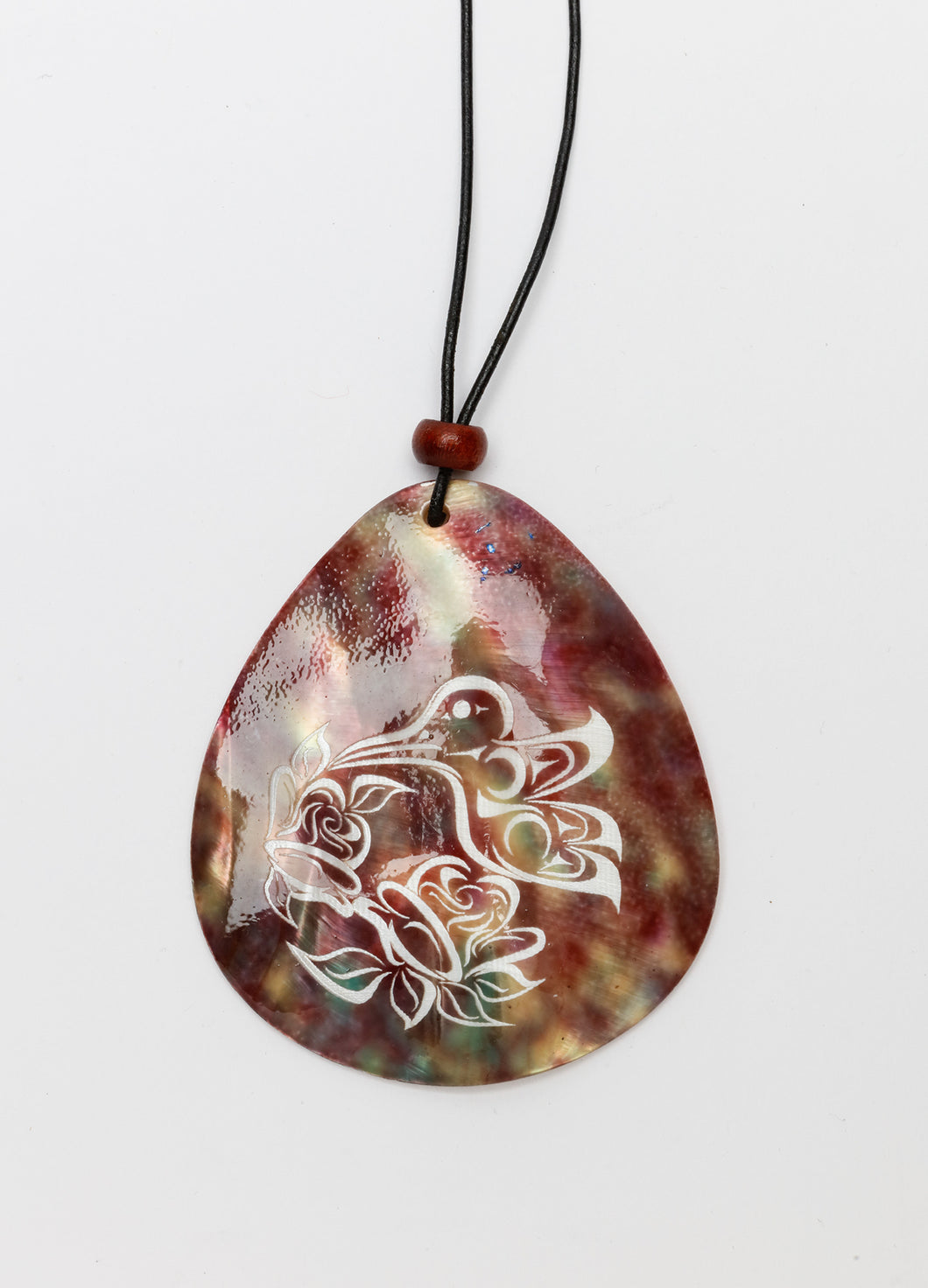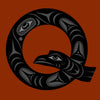
Hummingbird Necklace by Malynn Wilbur Foster, Salish Nation
Regular price
$375.00
Sale
Hummingbird Necklace
by Malynn Wilbur Foster, Salish Nation
Shell with wood bead
20” long, 3”high x 3”wide pendant
Malynn A. Wilbur-Foster is a Salish Native American artist who was born, raised and resides in Shelton, WA. She is enrolled in the Squaxin Island tribe and was raised as an enrolled Skokomish tribal member. She continues to have close ties with both communities. Her parents are renowned artists Andy P. Wilbur-Peterson and Ruth Wilbur-Peterson of Skokomish. Malynn was fortunate to be raised in her cultural lifestyle since birth, living in traditional ways.
At three years old, she took her first weaving class from the late Hazel Pete (Chehalis), and Hazel did not mince words when she said Malynn was the worst student she ever had. Malynn, insisted on doing things her way, and still does. Gathering was a big part of her childhood, among other traditional activities, her family gathered basket weaving materials and medicines in the early spring and summer and would sit around the fireplace as a family weaving baskets. Her parents learned from the late master weavers Louisa Pulsifer, Emily Miller, Hazel Pete and Bruce Miller as well as living tribal elder and master weaver Richard Cultee. Their knowledge and skill is still evident in Malynn's work today. She has taken her childhood teachings and truly mastered many styles of weaving from soft twined baskets, cedar plaited baskets, hard water tight baskets and mats, to wool woven blankets. Malynn uses only traditional materials that her and her husband Mike gather and prepare together and only traditional designs.
At five years old, Malynn received as an impromptu gift from her Grandpa Bert's brother Harold Wilbur, her first set of carving tools, which she made good use of. Much of her childhood memories with her grandpa were spent on his front porch carving miniature canoes and paddles with him. As she got older, she looked forward to getting off the school bus and meeting her dad in his carving shop. Much of her early pieces, were discarded items from her dad's scrap pile, all kinds of treasures were found there, masks, paddles, panels etc. She would pick one out and head over to the carving counter, where she would pull out her carving tools and get to work. Her dad added to her carving tool collection over the years and instructed with deliberate patience and skill to enhance Malynn's natural abilities. At age nine, she bent her first cedar box and not long after moved on to Salish masks.
As a child, everyone in her family agreed that she was least likely to become a basket weaver or beader, as she did not have the patience or ability to keep her grass, thread or yarn from becoming so entangled that it usually had to be cut. She remembers one basket in particular that was about four inches at the base and was so tight at the top that you could not fit a dime in it. She pursued carving as a primary art form until she was an adult and decided to pickup basketry again as a tool to fine-tune her patience in preparation to become a good mom. She figured if she could become a good basket weaver, she would no doubt have the patience necessary to be the best mom she could be.
Art was not the only emphasis in her home as a child, also important to the central way of living was hunting, gathering medicines and fishing, all of which she still does today. Her life of traditional ways limits the amount of time that she can produce art throughout the year. In spring and summer, she gathers, summer and fall she fishes and fall and winter, she hunts. She has fostered many children and taught them the traditional ways of her people. Malynn has also taught many tribal people the struggling art of fine twined baskets, using cattails, sweet grass, bear grass, maiden hair fern, cherry bark as well as cedar bark. Although her work demonstrates fine mastery, Malynn hesitates to call herself a master of anything. Her only hope is that her work speaks for itself and demonstrates an undying continuity of a lifestyle that predates European contact. "I just hope that in my jewelry, carvings, weavings and way of life as an example, that I inspire traditional values and cultural continuity within my tribes for generations to come".
Malynn's art is found in private collections worldwide and in the public collections of the Burke Museum and Seattle Art Museum.
